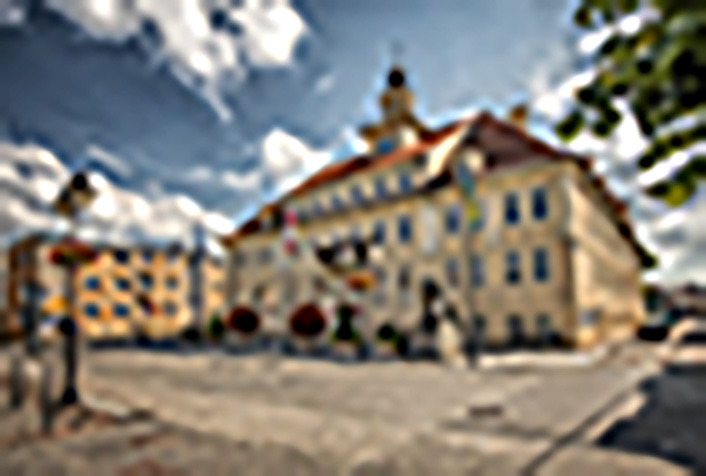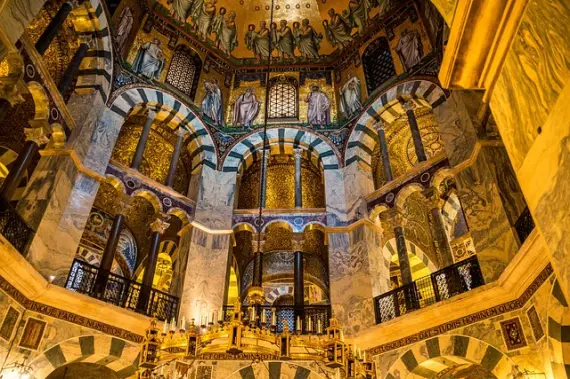Bus to AACHEN from OLSZTYNEK - buy a ticket
OLSZTYNEK

Olsztynek is a town in northeastern Poland, located in the Warmian-Masurian Voivodeship, Olsztyn County. It is a picturesque town with a rich history that serves as an important regional center in this part of the country.
Olsztynek is located in the central part of Warmia and Mazury, in a region of exceptional natural beauty. The town is close to lakes, forests and agricultural land, making it an attractive place for both living and tourism. In addition, Olsztynek lies about 25 kilometers from Olsztyn, the province's capital, providing easy access to the larger urban center.
Olsztynek has a long history, dating back to the Middle Ages. There are many historical monuments in the town center, such as the Church of St. Thomas the Apostle, which is one of the most important religious buildings in the region. Also worth noting is the Folk Building Museum, which showcases the region's traditional architecture and rich cultural heritage.
Olsztynek is well connected to the larger cities of the region, including Olsztyn, making it an attractive place to live for those working in the province's capital. The town is close to major national roads, providing convenient access to other parts of Warmia and Mazury and to other regions of Poland.
Olsztynek is a town in northeastern Poland, located in the Warmian-Masurian Voivodeship, Olsztyn County. It is a picturesque town with a rich history that serves as an important regional center in this part of the country.
Olsztynek is located in the central part of Warmia and Mazury, in a region of exceptional natural beauty. The town is close to lakes, forests and agricultural land, making it an attractive place for both living and tourism. In addition, Olsztynek lies about 25 kilometers from Olsztyn, the province's capital, providing easy access to the larger urban center.
Olsztynek has a long history, dating back to the Middle Ages. There are many historical monuments in the town center, such as the Church of St. Thomas the Apostle, which is one of the most important religious buildings in the region. Also worth noting is the Folk Building Museum, which showcases the region's traditional architecture and rich cultural heritage.
Olsztynek is well connected to the larger cities of the region, including Olsztyn, making it an attractive place to live for those working in the province's capital. The town is close to major national roads, providing convenient access to other parts of Warmia and Mazury and to other regions of Poland.
AACHEN

Aachen is a spa town in western Germany in the state of North Rhine-Westphalia, on the border with Belgium and the Netherlands. Aachen was once the seat of Charlemagne and the center of his European empire. Charlemagne built a palace and a chapel there, which was expanded over time into the cathedral that still exists today. Inside this historic temple are the imperial throne and reliquary of Charlemagne, the Great Relics of Aachen, i.e. Mary's gown or the baby Jesus' diaper, among others, and many other valuable medieval objects.
Aachen - what to see in the city of Charlemagne?
In addition to the cathedral, see the beautiful town hall and take advantage of the health-promoting properties of the local thermal waters. There are several interesting museums in Aachen: the cathedral treasury, the Centre Charlemagne introducing the history of Aachen, or the Couven Museum, presenting technical progress and the life of the city's inhabitants in the 18th century, among others. Aachen also has many interesting monuments and fountains. Right next to the cathedral is the Puppenbrunnen, a movable fountain from 1975 that tells the city's history in an abbreviated way with the help of figures moved by viewers.
Getting to Aachen
Aachen is now a major industrial center that is an important road and rail hub. The city is home to Germany's largest polytechnic university and many other smaller universities. You can fly there by plane, heading to Cologne airport, then change to a train. You can also get there directly from Poland by taking our long-distance buses. Take a bus to Aachen and see this remarkable city with your own eyes.
Aachen is a spa town in western Germany in the state of North Rhine-Westphalia, on the border with Belgium and the Netherlands. Aachen was once the seat of Charlemagne and the center of his European empire. Charlemagne built a palace and a chapel there, which was expanded over time into the cathedral that still exists today. Inside this historic temple are the imperial throne and reliquary of Charlemagne, the Great Relics of Aachen, i.e. Mary's gown or the baby Jesus' diaper, among others, and many other valuable medieval objects.
Aachen - what to see in the city of Charlemagne?
In addition to the cathedral, see the beautiful town hall and take advantage of the health-promoting properties of the local thermal waters. There are several interesting museums in Aachen: the cathedral treasury, the Centre Charlemagne introducing the history of Aachen, or the Couven Museum, presenting technical progress and the life of the city's inhabitants in the 18th century, among others. Aachen also has many interesting monuments and fountains. Right next to the cathedral is the Puppenbrunnen, a movable fountain from 1975 that tells the city's history in an abbreviated way with the help of figures moved by viewers.
Getting to Aachen
Aachen is now a major industrial center that is an important road and rail hub. The city is home to Germany's largest polytechnic university and many other smaller universities. You can fly there by plane, heading to Cologne airport, then change to a train. You can also get there directly from Poland by taking our long-distance buses. Take a bus to Aachen and see this remarkable city with your own eyes.
© 2025 Sindbad
Technical support, assistance, payments: Sindbad IT
© 2025 Sindbad
Technical support, assistance, payments: Sindbad IT
